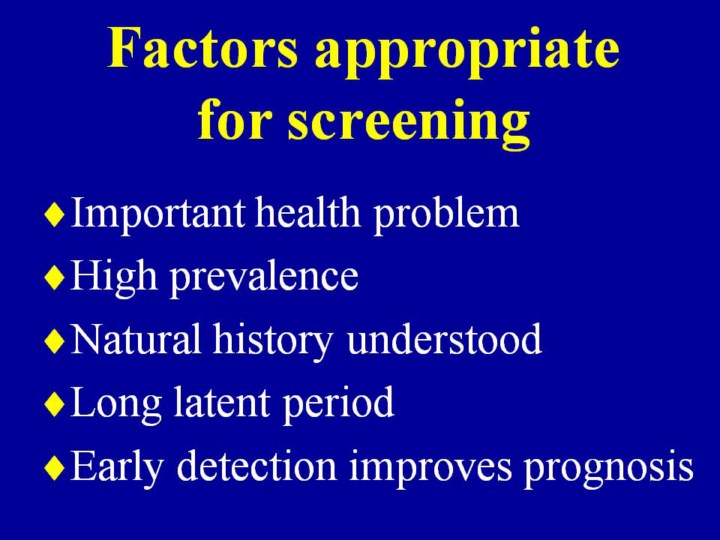 |
Before applying a screening program, health practitioners should assure the
appropriateness of the factor understudy for screening. The disease or the
risk factor appropriate for screening should be serious, highly prevalent
although sometimes it is worth screening even for diseases of low prevalence
which prove to have serious consequences as phenylketonuria. The natural
history of the disease progression should be understood. Screening for
asymptomatic diseases necessitates a long preclinical phase between the time
when the disease can be first diagnosed by screening and the appearance of
symptoms. Also, screening for risk factors, requires long exposure for
disease development. Early intervention to remove exposure or treat the
disease before appearance of symptoms should be known to be beneficial in
terms of reducing morbidity and mortality than that given after symptoms
develop.
|
